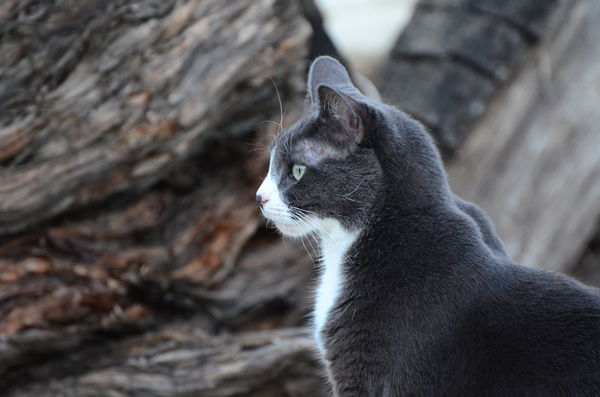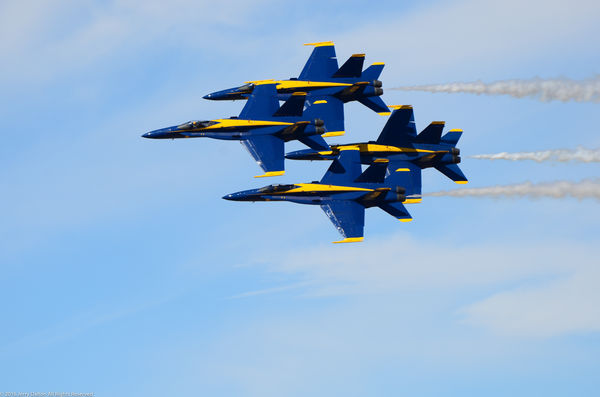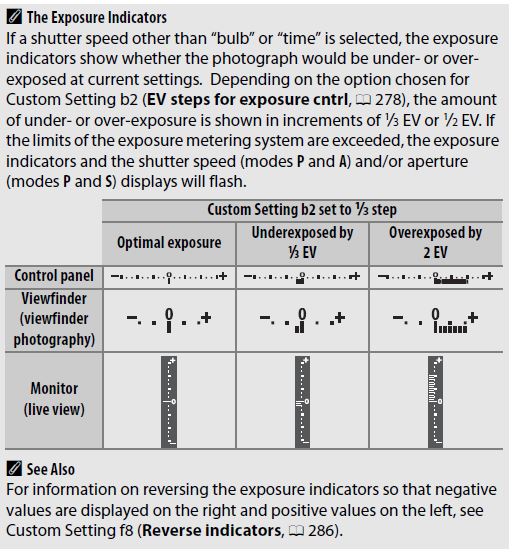Seeking to Understand Lens Range vs Performance
Jan 2, 2019 23:02:06 #
Hi & Happy New Year to all. I've been studying aspects of photography & my D7200 for 2 months, though not shooting much - too cold & and all my shots since going to Manual have been awful - so much to learn (& I get the idea of starting in Aperture Priority & I will use that when the situation dictates, but right now I want to get one good shot in manual - on purpose!!). So since I'm in study mode I wondered whether someone has done a guide / post on lenses that a novice could follow. I'm aware of the uses of some basic lenses types (fish eye, ultra wide angle, wide angle, medium, macro, telephoto / zooms, etc) & what a lens f-number means in terms of speed & DoF). I also get it that some zooms may not be super sharp at the extremes of their ranges.
However I'm unsure how range & maximum focal length affects sharpness (assuming exposure is good & camera shake, haze, fog etc are not factors) and size of subject. For instance a photographer is telling me my 70-300 mm lens is 'OK' as a run-around basic lens, but only between 100 & 200 mm; and if I want sharp images (all other things being equal) then there are 200 mm lenses (eg, 70-200 or 80-200) that will do a far better job. Eg, he is saying the same bird shot at the same distance & the saem focal length will be larger in the frame at the same focal length yet still far sharper than a lens like the 70-300 (and, he says, this means less cropping to see good detail & less PP).
Being a pretty new novice I don't get how a 200 mm lens "zooms" in closer than a 300 mm lens. I'm assuming that's the only way a subject can fill the frame more, at the same focal length, and be sharper, than a 300 mm lens. If you shot with both lenses at their max, doesn't the 300 still zoom in closer than a 200, even if it is a better quality 200?
However I'm unsure how range & maximum focal length affects sharpness (assuming exposure is good & camera shake, haze, fog etc are not factors) and size of subject. For instance a photographer is telling me my 70-300 mm lens is 'OK' as a run-around basic lens, but only between 100 & 200 mm; and if I want sharp images (all other things being equal) then there are 200 mm lenses (eg, 70-200 or 80-200) that will do a far better job. Eg, he is saying the same bird shot at the same distance & the saem focal length will be larger in the frame at the same focal length yet still far sharper than a lens like the 70-300 (and, he says, this means less cropping to see good detail & less PP).
Being a pretty new novice I don't get how a 200 mm lens "zooms" in closer than a 300 mm lens. I'm assuming that's the only way a subject can fill the frame more, at the same focal length, and be sharper, than a 300 mm lens. If you shot with both lenses at their max, doesn't the 300 still zoom in closer than a 200, even if it is a better quality 200?
Jan 2, 2019 23:28:14 #
Here's some possible answers:
The 70-300mm zoom is not truly 300mm, but substantially less.
The 200mm lens is also not truly 200mm, but substantially more.
The 'facts,' as stated, are false.
There's more to the story than you've presented here.
The 70-300mm zoom is not truly 300mm, but substantially less.
The 200mm lens is also not truly 200mm, but substantially more.
The 'facts,' as stated, are false.
There's more to the story than you've presented here.
Jan 2, 2019 23:28:47 #
Jan 2, 2019 23:37:18 #
jpwa wrote:
Tell your friend he does not know what he is talking about.
Agree.
Most tele zooms lose a little sharpness at the long end, but it’s less than you lose by shooting at the sharpest length and cropping.
Compose as best you can with your zoom, shoot a couple of f stops down from wide open, and learn the capabilities of your gear. Most of all, have fun.
Andy
Jan 2, 2019 23:37:31 #
dione961 wrote:
Hi & Happy New Year to all. I've been studyin... (show quote)
I think you are misunderstanding what is being said. I believe he is trying to tell you the 70-200mm F2.8 lens will be sharper when cropped that a 70-300mm F4-5.6 lens will be at 300mm when uncropped. And for the most part he is correct. The 70-300 lenses are all beginner to mid grade lenses, while the 70-200 lenses are pro grade lenses. The lens actually takes the image while the body is just a recording device.
Does this make sense?
Jan 3, 2019 00:33:38 #
MT Shooter wrote:
I think you are misunderstanding what is being said. I believe he is trying to tell you the 70-200mm F2.8 lens will be sharper when cropped that a 70-300mm F4-5.6 lens will be at 300mm when uncropped. And for the most part he is correct. The 70-300 lenses are all beginner to mid grade lenses, while the 70-200 lenses are pro grade lenses. The lens actually takes the image while the body is just a recording device.
Does this make sense?
Does this make sense?
Hi Shooter,
This statement makes sense: "the 70-200mm F2.8 lens will be sharper when cropped that a 70-300mm F4-5.6 lens will be at 300mm when uncropped". I wouldn't have understood everything he said but I did copy a bunch of what he said into my post; I just wasn't sure a 200 could have a larger zoom factor than a 300 regardless of the lens. It didn't seem right.
I've been trying to capture wild life from the sailboat but with the 70-300 many critters are well out of range. I'd like a VR as I can't use a tripod when the boat is underway. So I was looking for a lens I could hand hold, (managing shake with straps & shutter speed), that would let me fill the frame a little better & not need to crop too much - such a waste of pricey pixels.
I don't really know what I should look for, so I've been looking & asking around & this guy has a 70-200 for sale. Same goes for wide angle - we see stunning landscapes everywhere we go - especially here in Alaska. I have the beginner 18-140, & it's great for creeks, trees, buildings, street & forest-level stuff; but not as great (as best I can tell) for big landscape shots.
Anyhow, I appreciate your guidance - it's answered the basic question.
Jan 3, 2019 01:52:26 #
dione961 wrote:
Hi & Happy New Year to all. I've been studyin... (show quote)
First if you are a novice, and have yet to get a good shot in manual I recommend you do the following. Sit alone inside where it is warm, with a refreshing drink nearby, with your camera in hand, set to M, mode, in a comfortable chair in a brightly lit room. Now put your camera light meter in spot meter mode and select AF-S and the single focus point, focus point mode. Point your camera, at different parts of the room, some with light and some with shadow. Note the reading on the reflective light meter. Change the shutter and f-stop. Note the effect on the light meter reading. Pick a corner of the room to frame. Do the same thing. Adjust your f-stop, and shutter so that the highlights are not pegged on the meter and the shadows are not 0. Change the ISO if needed and keep an eye on shutter speed. Again note the effect on the light meter reading. Take a few shots and chimp. Adjust try again. Repeat the process with a different scene. This exercise will help you understand your camera and how to use it in M mode.
BUT I ask why is the M mode of interest to you right now? You can instead choose A or S auto-exposure modes and let the camera calculate exposure, you can dial in a little exposure comp if you want more or less light. That will free you to think more about the important part of the image, like composition, and the effect of depth of field on composition.
As for the question about zoom, yes the 300mm will fill the frame more than the 200. And IMHO the 70-300 is a very compotent lens in bright light. I have one and I like the sharpness of it, in bright light. See attached. However in general, optical quality is not determined by zoom length alone. There are other factors. But use the lens you own, take pictures. Many pictures. You will learn from that. And most of all, have fun.
_
My 70-300 is a sharp lens in bright light. And notice the separation of Ghost my beloved cat, from the background?

(Download)
A fast moving subject and a reasonably sharp result using the 70-300.

(Download)
Jan 3, 2019 06:45:51 #
billnikon
Loc: Pennsylvania/Ohio/Florida/Maui/Oregon/Vermont
dione961 wrote:
Hi & Happy New Year to all. I've been studyin... (show quote)
Most zoom's produce decent quality. Technique is more important than most zoom's. Handling a 200mm is different than using a 300mm etc. etc. One basic rule is to shoot at least 1/focal length. ie. if it is a 200 then your minimum shutter speed should be 1/200 sec. a 300 mm lens would be 1/300 sec. of course with VR, it is not that important but one should still be aware of it.
Proper hand holding a lens also increases sharpness, along with breathing properly, lots of photographers shoot when they are breathing out. So, lots of technique involved, NOT so much the lens. But a high quality lens is still nice.
Jan 3, 2019 06:48:14 #
dione961 wrote:
Hi & Happy New Year to all. I've been studyin... (show quote)
Think in terms of 'Jack of all trades, Master of none.' It may be an over generlization to say that the more range a zoom lens has to cover the less the image quality, but it is usually overcome at the expense of weight or dollars.
If you are a novice trying to shoot birds with a mediocre 70-300 lens in manual mode, you may be asking too much of yourself. Birding is one of the most demanding genres in terms of skill and equipment. I also think it is the least rewarding in terms of producing interesting pictures even when done well.
Jan 3, 2019 07:12:59 #
dione961 wrote:
Hi & Happy New Year to all. I've been studyin... (show quote)
Stop listening to this friend. Join a local photo club and make new photo friends.
What he is probably trying to explain is that consumer-grade (cheaper) zoom lenses are apt to have optimum (for that lens only) image quality at certain focal lengths and apertures, and usually not at the short and long end. Pro grade lenses are more likely to have better image quality throughout the zoom range, which will likely be narrower than the consumer lens.
You are correct in realizing that something didn't make sense. A 200mm lens cannot produce a larger image at the same focal length and subject to camera distance than a 300mm lens. It is possible that a shorter focal length can produce sharper images with greater detail, and if you have a camera with a high megapixel count (24mp for crop sensor, 36 and higher mp for full frame), you may be able to crop a little more and still maintain image quality. At F8, again, depending on the lens, you may find much less difference in image quality, btw. The 70-200 will most likely be both sharper and brighter when used wide open compared to the 70-300.
Better to think about a 300mm providing higher magnification, and not zooming closer. The reason is that depending on the lens, you may be able to get "closer" as in changing the camera-subject distance. Some lenses have shorter minimum focus distances - generally providing higher image magnification. I say generally because some lenses will "breathe" or shorten focal length at the near limit to get you closer to the subject. One lens, the Nikkor 28-300 is notorious for this. At infinity, you are reasonably close to 300mm, but shooting at 300mm at the near focus distance will yield an image that is approximately the same magnification as a 135mm lens.
Lenses like a Nikkor 70-200 FL is about as sharp a lens as you can find - and far sharper than any 70-300 or 75-300 I have yet seen.
As far as the manual thing - use the match needle in the viewfinder to base your exposure on, with the camera set to manual. You'll need to get good at evaluating scenes, and decide if you should adjust the exposure (manually of course) to better suit the range of brightness in the scene. If you are at a beach on a sunny day, and you measure the light using average or "matrix" (evaluative) metering, if you don't make any adjustment to the reading you see in the viewfinder, your image will be under exposed. You will need to add exposure by opening the lens or lengthening the shutter speed, to allow the sensor to see more light, thus making the image brighter. And vice versa.
There is no secret to shooting manual. You need to understand what the meter sees, and how to interpret what the meter tells you to get a good exposure. Practice will be your best teacher here. Focus (pun intended) on learning the "why" rather than just learning a sequence of steps. The "why" will give you the understanding you need to adjust for a wide variety of lighting conditions, and will help you gain the intuitive ability to analyze a scene quickly, which should be your end goal.
Jan 3, 2019 07:47:52 #
The 70-300 isn’t a $2000 lens but it’s a good Allrounder lens. I use this lens on d7000 and d810. The 810 have a stronger focus system.
Still I get the same quality on pics on both cameras just have to more cautious on the 7000.
In the old days a 300 mm lens was 300 mm long same with other focal length. And sure between the 70-300 and the 70-200(got it to try) are quite different when you look through the viewfinder. Wish one is the true about the focal lens I have no idea..... I just don’t worry about it......just saying
Still I get the same quality on pics on both cameras just have to more cautious on the 7000.
In the old days a 300 mm lens was 300 mm long same with other focal length. And sure between the 70-300 and the 70-200(got it to try) are quite different when you look through the viewfinder. Wish one is the true about the focal lens I have no idea..... I just don’t worry about it......just saying
Jan 3, 2019 08:49:18 #
You may wish to consider attending a workshop or two in basic camera operation. It may give you a foundation for your quest of learning photography. It should also speed your learning curve.
dione961 wrote:
Hi & Happy New Year to all. I've been studyin... (show quote)
Jan 3, 2019 09:35:05 #
gvarner
Loc: Central Oregon Coast
Sounds like you’re way out ahead of the learning curve. Manual mode is not the holy grail of mastering the process. Mastering any of the many available modes requires you to know when the mode will give you the result that you want. That’s the trick. It also means knowing when the other modes will not give you what you want. Many of a modern camera's features are just marketing gimmicks and many are very practical and useful in creating a pleasing photo. Practice practice practice. Digital film is cheap. But practice with a purpose.
Jan 3, 2019 10:34:15 #
"Tell your friend he does not know what he is talking about."
I am going to respectfully say that I am in agreement.
I am going to respectfully say that I am in agreement.
Jan 3, 2019 12:11:25 #
kmpankopf
Loc: Mid-Michigan; SW Pennsylvania
I agree with most people on this thread. A real friend would not let you suffer in Manual Mode. Start in Auto (learn), then A or S.
If you are shooting in Manual, do you know there is an exposure indicator on the Control Panel, Viewfinder and Live View? If you know how to use these, getting a better shot is much easier.
Check out pages 56 and 57 of the User's Manual.
I did a quick search of Youtube for 'nikon manual mode', looks like there are lots of short videos that might help.
If you are shooting in Manual, do you know there is an exposure indicator on the Control Panel, Viewfinder and Live View? If you know how to use these, getting a better shot is much easier.
Check out pages 56 and 57 of the User's Manual.
I did a quick search of Youtube for 'nikon manual mode', looks like there are lots of short videos that might help.
From D7200 User Manual, page 57.

If you want to reply, then register here. Registration is free and your account is created instantly, so you can post right away.






